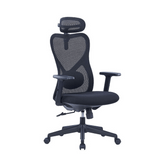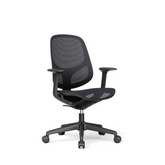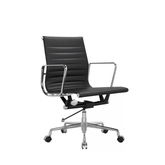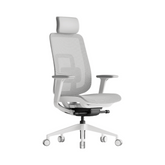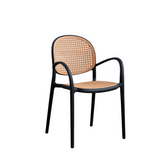Restoring the Elegance: Repairing Tears and Scratches in a Leather Chair
Introduction
Leather chairs exude a sense of elegance and sophistication, making them a popular choice for both homes and offices. However, over time, these chairs may develop tears or scratches, compromising their aesthetic appeal. If you find yourself facing this predicament, fear not! In this article, we will guide you through the process of repairing tears and scratches in a leather chair. By following these steps and using the right techniques, you can restore your leather chair to its former glory. Let's dive into the world of leather chair restoration!
Table of Contents:
- Understanding Leather
- Assessing the Damage
- Repairing Small Scratches
- Using Leather Conditioner
- Applying Leather Repair Kits
- Fixing Minor Tears
- Using Leather Glue
- Applying Leather Patch Kits
- Restoring Deep Tears
- Seeking Professional Help
- Preventive Measures
- Conclusion
- Frequently Asked Questions (FAQ)
1. Understanding Leather
Before attempting to repair tears and scratches in a leather chair, it's important to understand the nature of leather. Leather is a natural material that is prone to wear and tear over time. It can develop scratches, scuffs, and even tears. Different types of leather may require different repair methods, so it's essential to identify the type of leather used in your chair before proceeding with any repairs.
2. Assessing the Damage
The first step in repairing a leather chair is to assess the extent of the damage. Determine whether the damage is a minor scratch, a small tear, or a deep tear that requires professional intervention. This assessment will help you choose the appropriate repair method and materials.
3. Repairing Small Scratches
Using Leather Conditioner
For small surface scratches, a simple solution is to use a leather conditioner. Leather conditioners help moisturize and nourish the leather, reducing the appearance of minor scratches. Follow these steps to repair small scratches using a leather conditioner:
- Clean the area around the scratch with a mild leather cleaner and a soft cloth.
- Apply a small amount of leather conditioner to a clean cloth.
- Gently rub the conditioner onto the scratched area in a circular motion.
- Allow the conditioner to penetrate the leather for the recommended time.
- Buff the area with a clean cloth to remove any excess conditioner.
Applying Leather Repair Kits
If the scratches are more noticeable or deeper, you can use a leather repair kit to restore the damaged area. Leather repair kits typically include a color-matching compound, a filler, and a sealant. Follow these steps to repair small scratches using a leather repair kit:
- Clean the area around the scratch with a mild leather cleaner and a soft cloth.
- Apply a small amount of the color-matching compound to the scratch, using a spatula or applicator provided in the kit.
- Gently spread the compound over the scratch, ensuring it fills the damaged area.
- Allow the compound to dry according to the instructions provided with the kit.
- Apply a thin layer of the sealant over the repaired area to protect it and blend it with the surrounding leather.
4. Fixing Minor Tears
Using Leather Glue
Minor tears in leather chairs can be repaired using leather glue. Leather glue is specifically designed to bond and repair torn leather. Follow these steps to fix minor tears using leather glue:
- Clean the torn area with a mild leather cleaner and a soft cloth.
- Apply a small amount of leather glue to both sides of the tear, using a toothpick or a small brush.
- Press the torn edges together firmly, ensuring they align properly.
- Hold the torn edges together for the recommended drying time specified on the glue packaging.
- Once the glue has dried, apply a leather conditioner or leather protectant to the repaired area to restore its flexibility and shine.
Applying Leather Patch Kits
For larger tears or areas where the leather is missing, leather patch kits can be used to restore the damaged section. Leather patch kits typically include a patch of matching leather and adhesive. Follow these steps to repair minor tears using a leather patch kit:
- Clean the torn area with a mild leather cleaner and a soft cloth.
- Cut the leather patch from the kit to a size slightly larger than the tear.
- Apply a small amount of adhesive to the torn area and the back of the leather patch.
- Press the patch firmly onto the tear, ensuring it covers the damaged area completely.
- Hold the patch in place for the recommended drying time specified on the adhesive packaging.
- Trim any excess patch material using a sharp pair of scissors, if necessary.
5. Restoring Deep Tears
In the caseof deep tears or extensive damage to your leather chair, it is recommended to seek professional help. Professional leather repair specialists have the expertise and tools necessary to handle complex repairs and ensure a seamless restoration. They can assess the damage, provide an accurate solution, and execute the repair with precision.
6. Preventive Measures
To maintain the longevity and beauty of your leather chair, it's essential to take preventive measures to minimize the risk of tears and scratches. Here are some tips to help you protect your leather chair:
- Avoid placing sharp objects or items with rough surfaces on the chair.
- Keep pets away from the chair to prevent accidental scratches.
- Regularly clean and condition the leather to keep it moisturized and supple.
- Place the chair away from direct sunlight to prevent fading and drying out of the leather.
- Use a leather protectant spray to create a barrier against spills and stains.
By following these preventive measures, you can extend the lifespan of your leather chair and reduce the need for frequent repairs.
7. Conclusion
Repairing tears and scratches in a leather chair is a manageable task if approached with the right techniques and materials. By understanding the nature of leather, assessing the damage, and choosing the appropriate repair method, you can restore your leather chair to its former glory. Remember to take preventive measures to protect your chair and maintain its elegance for years to come. With a little care and attention, your leather chair will continue to be a centerpiece of style and comfort in your space.
8. Frequently Asked Questions (FAQ)
Q1: Can I repair deep tears in my leather chair myself?
A1: It is recommended to seek professional help for deep tears or extensive damage to your leather chair. Professional leather repair specialists have the expertise and tools necessary to handle complex repairs and ensure a seamless restoration.
Q2: How often should I clean and condition my leather chair?
A2: It is recommended to clean and condition your leather chair every 6-12 months, depending on its usage and exposure to dirt and sunlight. Regular maintenance will keep the leather moisturized and prevent it from drying out or cracking.
Q3: Can I use household glue to repair tears in my leather chair?
A3: It is not recommended to use household glue to repair tears in your leather chair. Household glue may not be suitable for leather and can cause further damage. It is best to use specialized leather glue or consult a professional for repairs.
Q4: How can I prevent scratches on my leather chair?
A4: To prevent scratches on your leather chair, avoid placing sharp objects or items with rough surfaces on the chair. Keep pets away from the chair to prevent accidental scratches. Regularly clean and condition the leather to keep it supple and less prone to scratches.
Q5: Can I use a leather protectant spray on my leather chair?
A5: Yes, using a leather protectant spray can help create a barrier against spills and stains, protecting your leather chair. Follow the instructions on the spray bottle for proper application and frequency.
Remember, proper care and maintenance are key to preserving the beauty and longevity of your leather chair.
Gavisco Premium Office Furniture - Elevate Your Workspace
